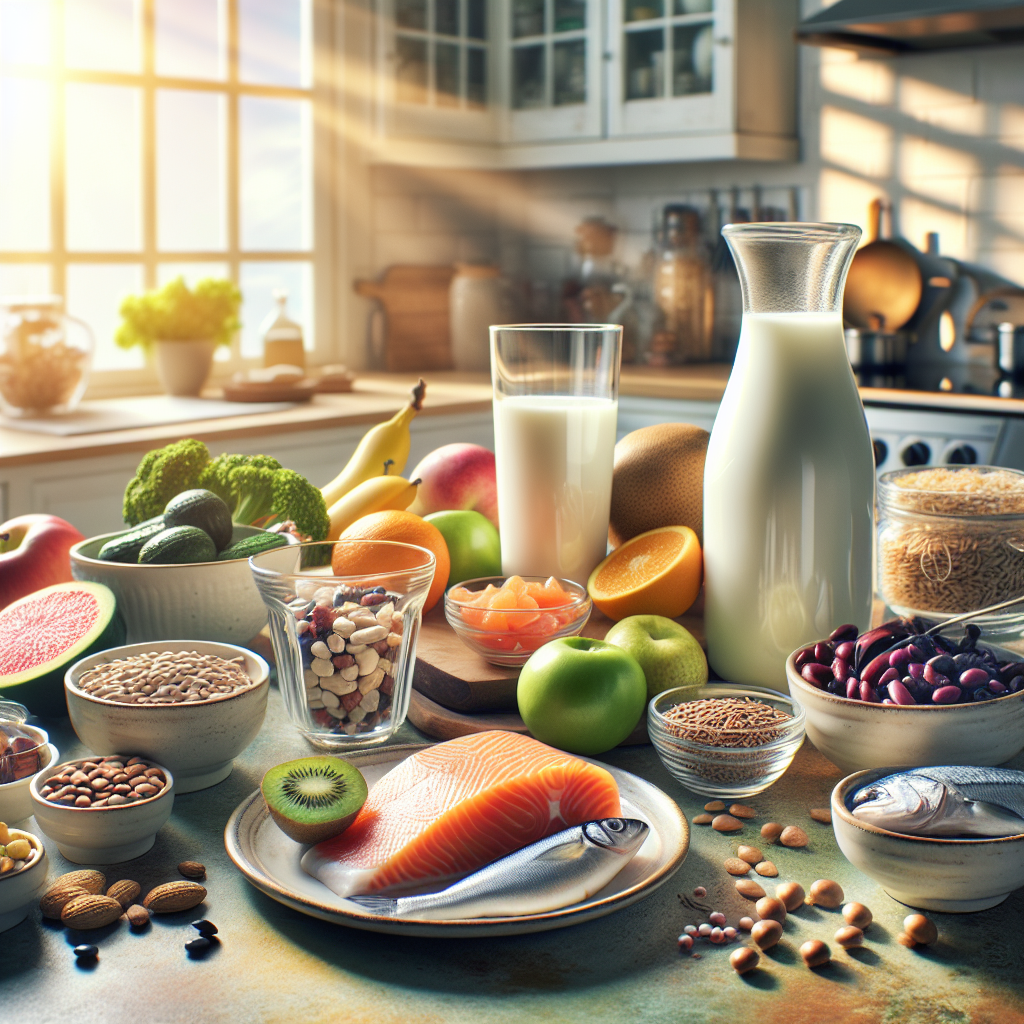Blended foods offer a multitude of benefits for elderly individuals, especially for those who may have difficulty chewing or swallowing solid foods - a condition known as dysphagia. As the body ages, natural changes in the digestive system can make it challenging to process foods the way it once did. Blended meals provide a nutritious solution that is gentle on the digestive system and can help ensure that seniors receive the vitamins and minerals they need for a balanced diet.
Moreover, blended food for the elderly can be customized to meet specific dietary requirements and preferences. Whether there is a need for high-protein, low-sodium, or diabetes-friendly meals, the versatility of blended recipes allows for personalized nutrition. Caregivers can easily adjust the texture and thickness to accommodate any swallowing difficulties, making mealtime safer and more enjoyable for the elderly.
Another key benefit is the ease of meal preparation. With blended foods, caregivers can prepare meals in advance, ensuring that seniors have access to healthy options even when time or resources are limited. Proper nutrition is crucial for maintaining the health and well-being of the elderly, and blended meals are an excellent way to provide it.
At Cart Health, we understand the importance of these benefits and strive to support caregivers in their quest to provide nutritious meals. Order online here for convenient shopping and doorstep delivery! and let us assist you in finding the right products to create wholesome blended meals that cater to the unique needs of your loved ones.
Essential Nutrients in Elderly Nutrition and Their Sources

As we age, our nutritional needs evolve, and it becomes critical to focus on essential nutrients that support overall health and well-being. Elderly nutrition should prioritize a variety of vitamins and minerals to maintain bone density, support cognitive function, and strengthen the immune system. Calcium and vitamin D are vital for maintaining bone health, helping to prevent osteoporosis and fractures. These can be sourced from dairy products, fortified plant milks, and sunlight exposure.
Vitamin B12, often found in meat, fish, and dairy products, is crucial for maintaining nerve function and the production of DNA and red blood cells. However, many older adults have difficulty absorbing B12 from food, making fortified foods or supplements a valuable addition to their diet. Fiber plays a significant role in digestive health and can be found in fruits, vegetables, whole grains, and legumes. It helps prevent constipation, a common issue among the elderly.
Protein is also essential for preserving muscle mass and strength, which is particularly important to prevent falls and frailty. Good sources of protein include lean meats, beans, and nuts. Omega-3 fatty acids, found in fatty fish like salmon, are important for heart health and may also have anti-inflammatory properties.
Lastly, adequate hydration is often overlooked but is vital for all bodily functions. Elderly individuals should be encouraged to drink fluids regularly, especially water, to maintain hydration levels. Caregivers should be mindful of these essential nutrients and seek to incorporate a variety of sources into blended food for the elderly, ensuring a balanced and health-supportive diet.
Crafting the Perfect Blended Meal: Texture and Flavor Tips

Crafting the perfect blended meal for the elderly involves more than just pureeing foods; it's about achieving the right balance of texture and flavor to ensure meals are not only nutritious but also enjoyable. When preparing blended food for the elderly, it's important to aim for a smooth, creamy consistency that's easy to swallow and digest. To avoid the monotony of overly pureed meals, mix textures by adding a slightly chunkier element, like a dollop of mashed potato, to stimulate the palate without causing difficulty in swallowing.
Flavor is equally crucial, as taste buds may become less sensitive with age. Enhancing meals with a variety of herbs, spices, and aromatic vegetables can greatly improve the appeal of blended dishes without the need for excess salt, which is often a concern for those with hypertension or heart conditions. Fresh herbs like basil, oregano, and mint, or aromatic spices like cinnamon and nutmeg, can add a delightful depth to pureed fruits and vegetables.
To create a well-rounded flavor profile, consider the balance of the five taste sensations: sweet, sour, salty, bitter, and umami. A hint of lemon juice can brighten up a blend, while a touch of natural sweetener like honey can complement the savory notes of a vegetable puree. Umami-rich ingredients like tomatoes, mushrooms, and low-sodium soy sauce can provide a satisfying savoriness that may be missing in softer diets.
Lastly, the visual appeal of food should not be underestimated, even in blended form. Garnishing with a sprinkle of fresh herbs or a drizzle of olive oil can make the meal more inviting, encouraging better appetite and intake. By paying attention to texture and flavor nuances, caregivers can turn blended meals into delightful culinary experiences that cater to the specific needs and preferences of the elderly.
5 Nutrient-Rich Blended Food Recipes for Senior Health

Providing nutrient-rich meals is essential for senior health, and blended food can be a delicious way to meet their dietary needs. Here are five blended food recipes that are not only packed with essential nutrients but also cater to the palates of the elderly.
- Classic Carrot and Ginger Soup: A smooth combination of vitamin-rich carrots, ginger, and a hint of garlic. This soup provides a boost of antioxidants and is soothing for the digestive system.
- Spinach and Avocado Smoothie: Blended with ripe avocado, fresh spinach, and a banana for natural sweetness. This smoothie is a powerhouse of potassium, healthy fats, and fiber, making it an ideal meal supplement or snack.
- Blueberry and Oatmeal Breakfast Cream: Oats are blended with blueberries, Greek yogurt, and a touch of cinnamon, creating a heart-healthy and antioxidant-rich start to the day.
- Savory Lentil Puree: Cooked lentils are pureed with sautéed onions, herbs, and a splash of lemon juice. This dish is high in protein and fiber, supporting muscle health and digestion.
- Roasted Butternut Squash Blend: Roasted butternut squash pureed with a hint of nutmeg and a swirl of cream for added richness. This blend is full of vitamins A and C and has a naturally sweet flavor that is generally well-received.
Each recipe can be adapted to suit individual dietary requirements and preferences. For example, dairy products can be substituted with plant-based alternatives for those with lactose intolerance. Additionally, textures can be adjusted by adding more or less liquid to achieve the desired consistency. Caregivers can also modify the flavors by incorporating different herbs and spices, ensuring that each meal is not only nutritious but also a pleasure to eat.
Adapting Family Favorites to Blended Versions for Elders
Adapting family favorites into blended versions can provide comfort and nostalgia for elders, while ensuring that they receive the nutrition they need. It's a way to bring the joy of a shared meal to those who may have difficulties with chewing or swallowing. Consider these tips for transforming traditional dishes into elder-friendly blended meals:
- Meatloaf to Meat Puree: By blending cooked meatloaf with broth, you can create a savory puree that retains the familiar flavors while being easy to consume.
- Mashed Potato Twist: Mashed potatoes are already soft, but blending them with extra milk or cream can result in a smoother consistency that's easier for elders to manage.
- Apple Pie Smoothie: Blend baked apples with cinnamon, nutmeg, and a scoop of vanilla ice cream for a sweet treat that echoes the classic dessert's taste without the need for chewing.
- Vegetable Casserole Soup: Any vegetable casserole can be turned into a warm, nourishing soup by adding vegetable stock during blending, creating a smoother version of the original dish.
- Fish Stew to Fish Cream: Blending a fish stew with milk or coconut milk transforms it into a rich, creamy dish that maintains the essence of its flavors.
When adapting recipes, it's important to consider the nutritional content and ensure that the meal remains balanced. Caregivers should aim to include a variety of food groups, such as proteins, carbohydrates, and fats, as well as vitamins and minerals essential for senior health. Moreover, the use of spices and herbs can enhance the taste, making blended foods more appealing. In any adaptation, the key is to respect the elder's preferences and dietary restrictions while providing nutritious, enjoyable meals.
Safe Food Handling and Storage for Blended Meals

Safe food handling and storage are critical when preparing blended meals for the elderly to prevent foodborne illnesses. Blended foods can be more susceptible to bacterial growth because of the increased surface area and moisture content. Here are some key practices to ensure safety:
- Temperature Control: Keep hot foods hot and cold foods cold. Blended meals should be consumed immediately or stored in the refrigerator at 40°F (4°C) or below.
- Cross-Contamination Prevention: Use separate cutting boards and utensils for raw and cooked foods to avoid cross-contamination.
- Proper Cooking: Ensure all ingredients, especially meats, are cooked to the right temperature to kill any harmful bacteria.
- Reheating Guidelines: When reheating blended meals, bring them to a temperature of 165°F (74°C) to eliminate potential pathogens.
- Label and Date: Always label blended meals with the date of preparation and use within 48 hours for optimal safety and freshness.
For caregivers and health professionals looking to provide the best care through nutritious meals, understanding these safety precautions is paramount. Additionally, using high-quality ingredients and reliable kitchen equipment can make meal prep safer and more efficient. If you're in need of specialized kitchen tools or storage solutions to help with preparing blended food for the elderly, Order online here for convenient shopping and doorstep delivery! At Cart Health, we understand the importance of mealtime for elders and offer a variety of products to assist in the safe preparation and storage of blended meals. Join the Cart Health family and experience the difference in quality and service.









